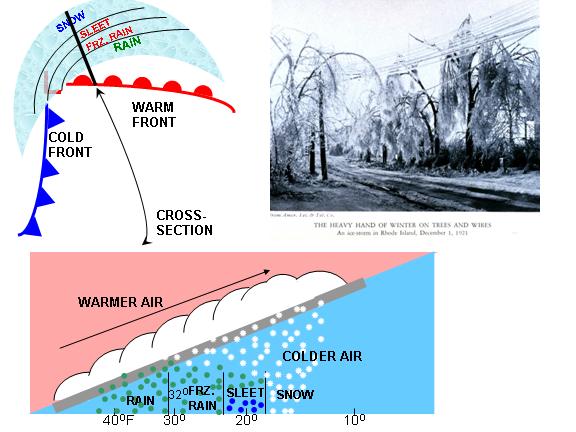Freezing rain occurs in the wintertime under special conditions when rain produced in a warm air mass
falls through a shallow cold air mass below it, freezing on contact with the ground (
if the ground is below 32 degrees F.)
The cold air layer has to be shallow enough so that the
rain falling through it doesn't have time to freeze before it reaches the surface. If the cold air
layer is deep enough, the rain freezes as it falls to form
ice pellets (also called sleet) instead.
If more than about ½ inch
of ice accumulates, tree limbs, branches, and power lines start to snap. The resulting
damage can cost many millions of dollars, and it can be days or even weeks before downed power
lines can be fixed, restoring power to homes and businesses.
|



